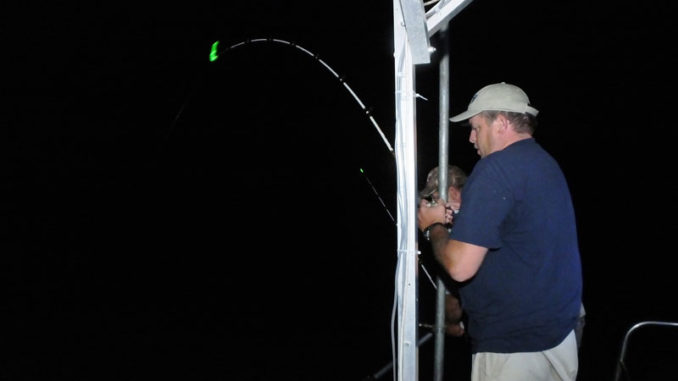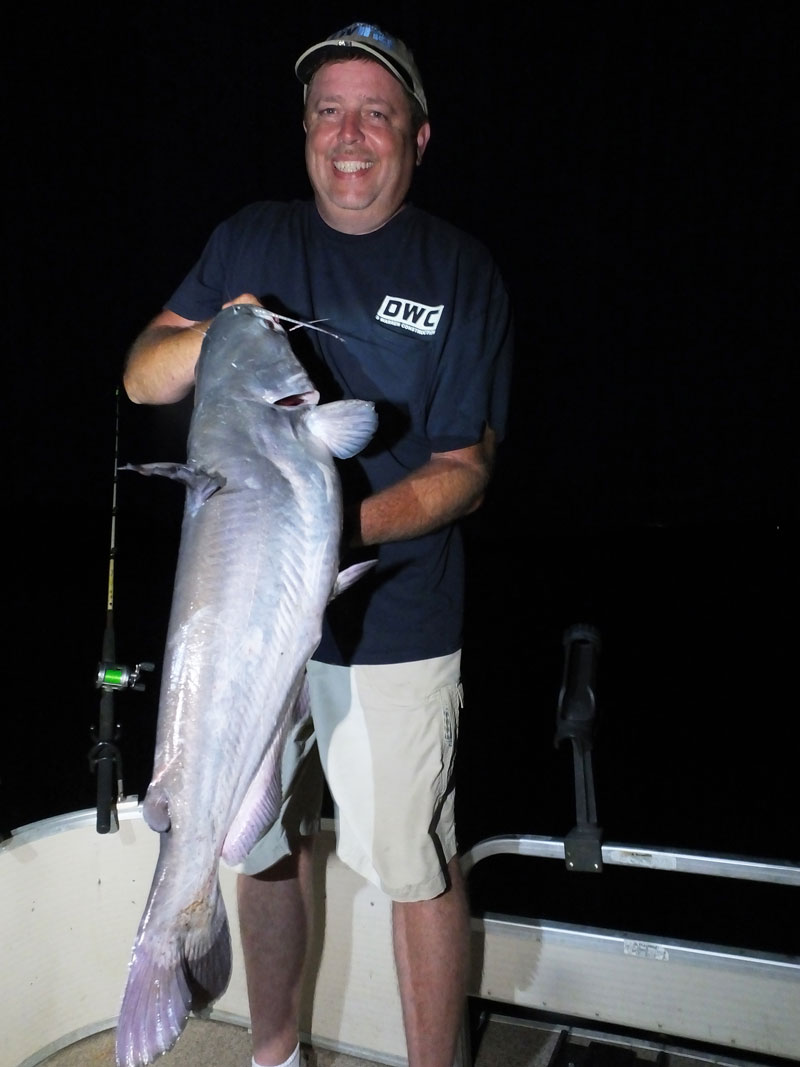
Look shallow for night-fishing action
Catfish action on the Santee Cooper lakes is excellent by day throughout the year. But by mid-May and into early June, the nocturnal action perks up considerably. Daytime fishing in deep water is still effective. But now many knowledgeable catfishermen migrate to skinny water and find fat cats on a strong bite.
Why and where
Guide William Attaway finds it worthwhile to trailer his pontoon boat from his home in Pomaria, S.C., to target big blue catfish and flatheads on the shallow flats after dark on Lake Marion and Lake Moultrie.
“The key for catching catfish remains consistent, day or night.They’re going to be where they can eat,” Attaway said. “At this time of the year, the shallow water is flooded after the sun goes down with critters that catfish love to eat.”
Attaway (803-924-0857) said bream, perch, gizzard shad and other food sources are available. And that attracts the catfish to the skinny water.
Shallow water is good, as long as deep water is nearby
“When I set up, I’m in shallow water, often less than 4 feet deep. But it’s crucial to be near deeper water,” he said. “Catfish use the creeks, ditches or depressions that lead from the main lake to funnel from deeper water back into the shallow flats and coves.
“As food sources transition to the shallows, so do catfish,” he said. “Not all the catfish move shallow. But enough make the trip to have some seriously good night-fishing action. Often, we set up so shallow (that) cypress trees are all around the boat.”
Attaway studies maps as well as his graph to locate potentially good areas where even slightly deeper water funnels fish to the shallows.
How to set up for catfish after dark
Attaway said it’s crucial to anchor in such a way that his boat stays absolutely stationary.
“It’s not unusual to get some breeze at night. And that actually makes it more comfortable,” he said. “Also, the occasional storm passes through. And even if we don’t get hit, the wind can quickly go from calm to breezy. If not anchored securely, the boat turns and lines and baits get crossed. And it’s always more difficult to fix problems in the dark. As the wind slacks off and then increases again, the boat will continue to bounce around.”
Attaway said he originally used anchors that dug into the bottom with 150 feet of line off the bow and stern. He said that is an effective way. But now he uses long poles that slip through rungs on brackets he’s made.
“I run the pole through the rung and punch the pole deep into the bottom on each end of the boat, and that’s it,” he said. “The boat stays stationary all night.”

Fan casting is a good way to set up
The next big factor is rigging and bait. He uses the same rods, day or night, usually 7 ½- to 8-foot rods with medium-heavy tips and reels spooled with 50-pound test line and tied to 8/0 circle hooks. He employs baits he feels are in the shallow. Bream, perch, shad and herring are all excellent choices.
“I fan-cast the rigs all around the boat with the goal of having some in 2 feet of water, while others will be incrementally deeper down to 7 or 8 feet deep,” he said. “The bite pattern will change from night to night. So I always start out with this bait distribution. Sometimes a depth pattern evolves, but on some nights, it stays random. But it’s crucial to use fresh bait. I keep plenty of live bait in the bait tank and will use them live and also as fresh-cut chunks.”
Attaway said once he is set up, he doesn’t use external lights on the boat but uses fluorescent rings on his rod tips to better see bites in the dark.
When, where for catfish after dark
Attaway is always set up for the night, anchored and fishing well before dusk.
“Sometimes we’ll have a flurry of big-fish action right at dusk,” he said. “Typically, the best action will occur just after dark. And then we’ll have periodically steady bites throughout the evening. Often, another very good burst of multiple bites occurs right about midnight. “
Attaway has fished all night in the past but now typically pulls his rigs in and heads to the landing by 1 to 2 a.m.
“Many times, we’ll have a big box of catfish long before then. But usually by that time, we’ve caught plenty of fish, and everyone’s ready to head back,” he said.




